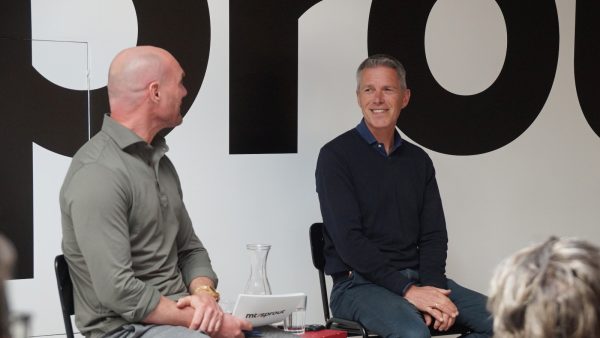Geen producten in de winkelwagen.
No company better exemplifies the power of a strong corporate culture than Zappos, the online shoe and clothing retailer acquired by Amazon last November for $1.2 billion. Just over a decade old, its corporate culture is the critical glue that helps this rapidly growing company deliver on its promise of providing exceptional customer service – and delivering happiness!
To witness this culture firsthand, I organized a private tour of Zappos corporate headquarters in Henderson, NV for 120 CEOs and executives of growth companies. We also invited their well known CEO, Tony Hsieh, to share his personal insights into corporate culture with a broader audience of growth company executives the following day.
Failed Culture
Hsieh’s obsession with corporate culture dates back to his first company, LinkExchange, which he sold to Microsoft for $265 million when he was 24 years old. He decided to sell the company the morning he found himself hitting the snooze button on his alarm clock multiple times, dreading the thought of having to go into work. And he wondered how many other employees felt the same way.
He vowed if he launched another company he would focus on maintaining a strong corporate culture rather than one that haphazardly drifted and shifted as new employees were added to the firm.
Culture drift
This cultural drift begins around 70 employees – when the senior executives no longer know everyone’s name in the company. This drift accelerates when the company moves to a second floor in a building or opens a second location. The physical separation makes it that much harder to keep the corporate culture tight and aligned.
The key to maintaining a cohesive culture is discovering a set of core values that accurately reflect the nuances of the organization’s personality. Hsieh led this discovery exercise during Zappos’ fifth year in business. This is about the right timing. Like a child, the corporate culture or personality isn’t fully revealed until the company is five years old, being shaped through early experiences and the collective values of the people involved.
Discovery process
I’ve seen firms spend tens of thousands of dollars and months going through a laborious process that often generates a generic list of core values. And this generic list often fails to represent the uniqueness and power of the existing culture. Alternatively, there is a way to get at your core values that’s fun and amazingly fast. It’s an approach outlined in Jim Collins’s and Jerry Porras’s article “Building Your Company’s Vision.” You can download the article from www.hbr.com for $6 or Collins has some worksheets available on his website www.jimcollins.com . Just follow their Mars Mission process, a process similar to one Hsieh used to discover Zappos’ core values.
Hsieh ended up with ten core values that describe the Zappos culture. As he suggests, it takes about a year to refine the specific wording of the core values. This happens naturally as you discuss and apply the core values to everyday activities. In the end, I like to see each core value represented by a phrase vs. a single word i.e (add one of the Zappos core values); a couple sentences to describe the unique meaning of each core value; and a story or two (legends) from the company’s history that illustrates each value.
Using core values
More than a list posted on the wall, core values must sit at the foundation of all the “people” or Human Resource (HR) systems in the company. It starts with the recruiting and hiring process. Zappos conducts two interviews, one which accesses fit to the job, another which accesses cultural fit. There are specific interview questions which align with each of Zappos’ ten values.
In addition, orientation (five weeks at Zappos) and performance reviews are built around the core values. Use your core values as the chapter headings for your employee handbook. And if you struggle finding topics for newsletters and blogs or names for internal awards, fall back on your core values.
Everyday management
Most importantly, a company’s core values should be a part of everyday management of the company. When management makes a decision, relate it to a value. When they reprimand or praise, refer to a value. When customer issues arise, compare the situation to the ideal represented by the value. Small as these actions may sound, they probably do more than any of the other HR systems for keeping core values alive in your organization.
If you’re not convinced or simply need to see what it’s like to align an entire organization around a set of core values, make the trek to Henderson, NV. Zappos hosts public tours Monday – Thursday. And pick up a copy of Hsieh’s new book Delivering Happiness when it comes out in June.
Lees ook het boek: De rockefeller-strategie van Verne Harnish
>> Sprout organiseert de ChallengerDay 2010. Bekijk de website <<









